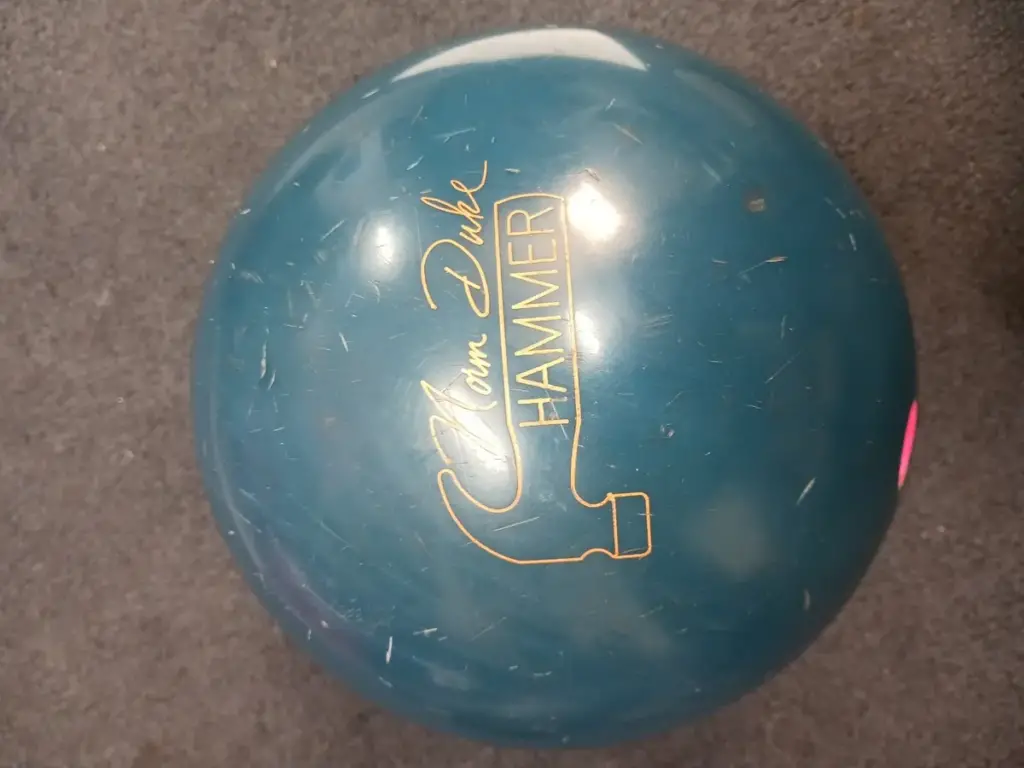The common difference between Urethane and Reactive resin bowling balls is that
- Urethane resin bowling balls tend to have softer outer shells in comparison to reactive resin but it is more resistant to chemical and abrasion
- Urethane bowling balls have lower oil absorption and less hook potential in comparison to Reactive resin balls
- Urethane bowling balls have more control than Reactive resin balls
- Reactive bowling balls have more friction response
- Urethane bowling balls have better long-term performance and require less maintenance than reactive resin balls
To get a detailed idea, keep reading this article.
Urethane VS Reactive Resin: Quick Comparison
The following table shows the quick difference between Urethane and Reactive Resin bowling balls.
| Factors | Urethane Resin | Reactive Resin |
| Shell Composition | Softer Outer Shell but more resistant to chemicals and abrasion | More robust outer shell with better control |
| Oil Absorption | Lower Oil Absorption | Higher Oil Absorption |
| Initial Ball Motion | Smoother and Control Motion from the Start | Aggressive Motion from the Start |
| Hook Potential | Less Hook Potential | More Hook Potential |
| Control and Aggression | More Control | Less Control |
| Friction Response | Less Friction Response | More Friction Response |
| Long Term Performance | More long-lasting | Requires more maintenance |
Now let’s dive into the detailed discussion between urethane and reactive resin bowling balls.
Urethane VS Reactive Resin: Detailed Discussion
Let’s find out the detailed difference in quality between the Urethane and Reactive resin bowling balls.
Shell Composition:
Urethane has a robust outer shell with enhanced flexibility whereas Reactive has a blend of urethane and a proprietary resin. Urethane balls have a softer outer shell compared to the covers on reactive balls.
The composition of urethane and reactive resin shells varies significantly in terms of materials and properties.
Urethane is renowned for its resistance to chemicals, abrasion, and impact. Besides urethane also serves as a durable coating suitable for enduring thermal shock, heavy machinery, high traffic, and exhibiting scratch and chip resistance. Additionally, it possesses UV resistance and can function as an exterior topcoat but is unsuitable for immersion service.
In contrast, reactive resin elevates the ball’s grip on the lane, providing superior durability and hook power compared to polyester or urethane alone. Reactive resin balls exhibit a tackiness that enhances lane grip, resulting in increased hook potential in comparison to urethane balls, which deliver a more controlled ball motion.
Bonus: Check this to find out the best bowling ball bags.
Oil Absorption:
Urethane bowling balls have a lower oil absorption rate than reactive resin bowling balls. But this means the urethane balls do not have to rely more on oil and require just a little bit for good performance. However, reactive resin bowling balls soak more oil, and that gives them more grip.
Urethane bowling balls stay durable because they don’t soak up oil, this is because of their lack of pores. They don’t rely much on oil, needing just a bit for good performance. With less oil absorption, these balls slide smoothly on drier lanes, making them great for straight shots.
On the flip side, reactive resin bowling balls soak up more oil, giving them a strong grip on the lane. This helps them create more spin and hook, making them awesome for hook shots and handling lots of oil on the lane.
But on drier lanes, where there’s less oil, reactive resin bowling balls might be a bit harder to control due to their tendency to soak up oil.
Bonus: Find out the difference between Motiv and Heavy Oil.
Hook Potential:
Urethane balls have less hook potential in comparison to Reactive resin bowling balls. This is directly related to their oil absorption rate. More oil absorption ability means more hook potential.
Hooking potential indicates the way bowling balls spin. This plays a big role in how they perform. Urethane balls usually don’t spin as much, meaning they have less hook potential. But they are a good fit for all kinds of bowlers because they offer a good hook and are easy to control.
This makes them good for drier lanes where you want a more controlled, straight shot. Because they don’t soak up much oil, they kind of push it away, making a little space on the lane called a “shelf.” This helps urethane balls roll smoothly and predictably, making them perfect for bowlers who like the traditional straight shot.
On the flip side, reactive resin balls really know how to spin and have a lot more hook potential. This makes them great for creating extra friction and making the ball curve more on the lane.
Since they soak up more oil, they get a strong grip on the lane, especially on lanes with a lot of oil. This strong hook potential makes reactive resin balls perfect for hook shots and heavy oil conditions, giving bowlers a more exciting and aggressive ball motion with better pin action.
Friction Response:

Urethane balls come with less friction response in comparison to Reactive resin bowling balls. This has to do with their oil absorption rate and hooking potential. A higher oil absorption rate means better friction response in the lane.
Urethane balls, characterized by a lower friction coefficient and a smoother surface, provide less traction on the lane. This unique feature allows them to push away oil rather than absorb it, resulting in a smoother and more predictable roll. Urethane balls are well-suited for drier lanes and straighter shots.
Reactive resin balls have a higher friction coefficient and a textured surface, offering increased traction on the lane. These balls possess a greater capacity to absorb oil, creating a firmer hold on the lane. This characteristic leads to heightened friction and hook potential, making reactive resin balls ideal for hook shots and conditions with heavier oil volumes.
Long Term Performance:
Urethane bowling balls tend to last for a longer time than reactive resin balls. This has to do with their maintenance requirement and the overall porosity in their structure.
Urethane balls are widely recognized for their durability and extended lifespan, appealing to bowlers seeking a long-lasting investment. With lower porosity compared to reactive resin balls, urethane requires minimal maintenance, reducing the likelihood of cracking or chipping.
In contrast, reactive resin balls demand more attentive maintenance to preserve their performance attributes. Being more porous than urethane balls, they absorb more oil and necessitate frequent cleaning to prevent oil buildup.
Despite their higher maintenance requirements, reactive resin balls excel in performance and hook potential, making them a preferred choice for experienced bowlers seeking an aggressive ball motion and improved pin carry.
Which One to Choose Between Urethane and Reactive Resin?
Between Urethane and Reactive resin balls choose Urethane bowling ball if you want
- More control
- Less requirement for maintenance
But go for a reactive resin ball if you want
- More hook potential
- Better friction response
Frequently Asked Questions (FAQs):
How Do You Know if a Bowling Ball is Reactive?
To know if a bowling ball is reactive just grab it properly. Normally, a reactive ball is coated with a layer of grippy resin. This means the ball has more traction on the lane and the bowler has more control over the speed and angle of the throw.
Should I Use Urethane and Polyurethane?
You should use polyurethane if you want a durable finish that won’t need to be touched up or requires frequent maintenance. Apart from that polyurethanes are more resistant to water. Due to the overall versatility and the advantages of using Polyurethane, this type of resin is the most commonly used for bowling balls.
What is Stronger Urethane or Epoxy?
Epoxy is a higher-strength material whereas Urethane comes with greater flexibility. Urethane shows better resistance to chemicals, abrasion, and impact whereas epoxy is better in overall strength. So, if you are looking for a stronger resin, go for Epoxy, but Urethane is the best option for a more chemically resistant resin.
Conclusion
In conclusion, both urethane and reactive resin bowling balls are excellent choices. However, when it comes to oil absorption you get a better response from reactive resin bowling balls. Whereas, urethane resin bowling balls have better control. Either way, make sure to check your priorities properly before buying the bowling ball



![Urethane Vs Reactive Resin [Choose the best Bowling Ball]](https://bowlingroller.com/wp-content/uploads/urethane-vs-reactive-resin-450x270.jpg)



